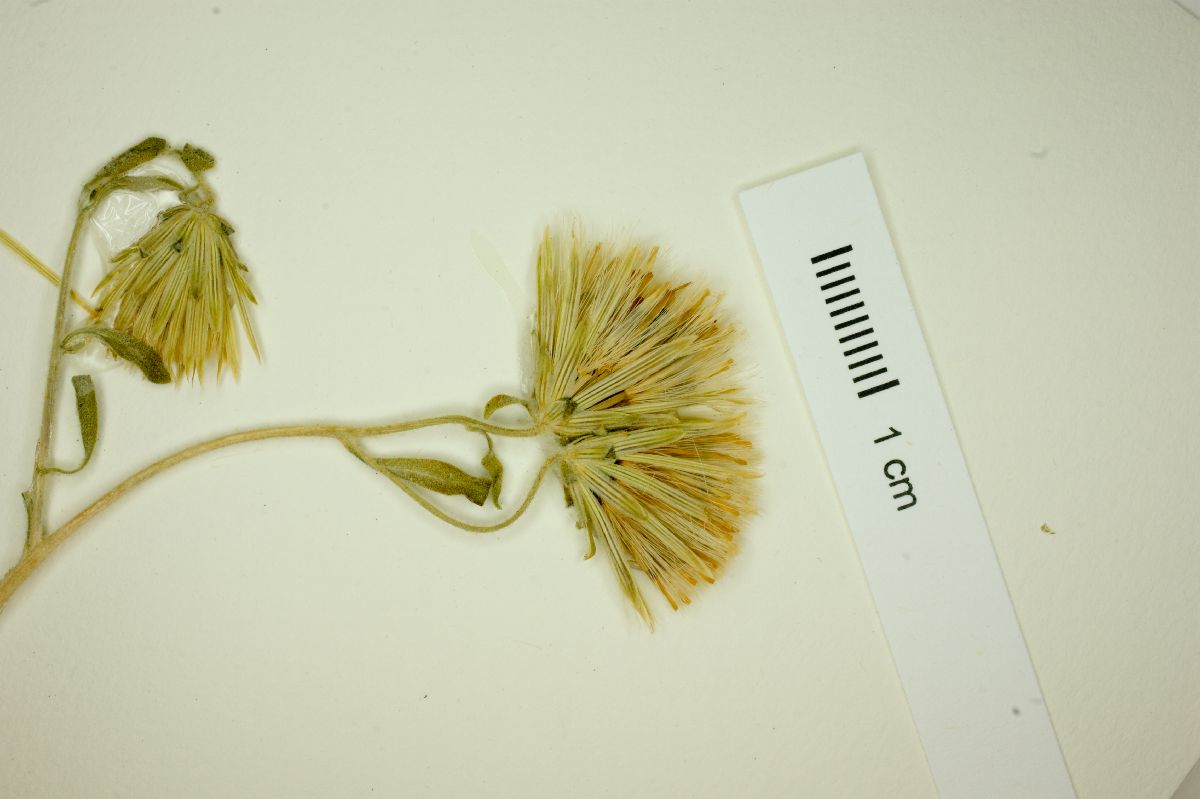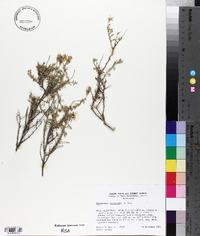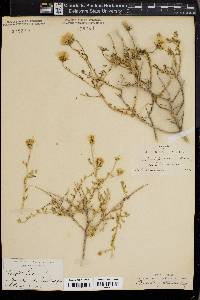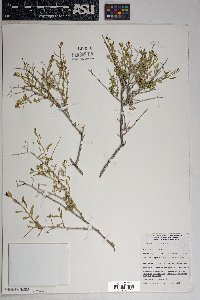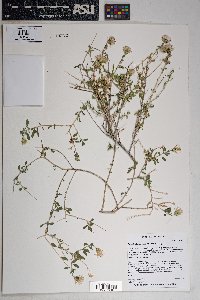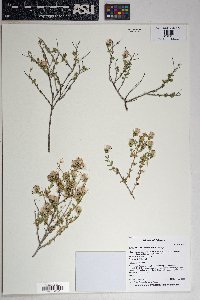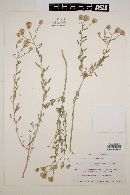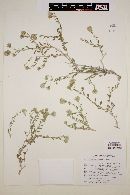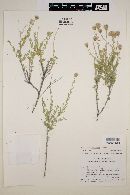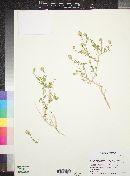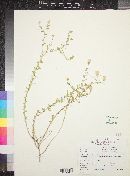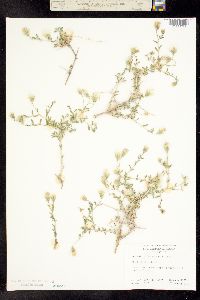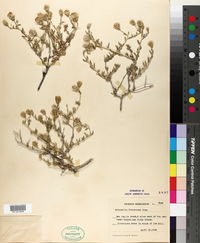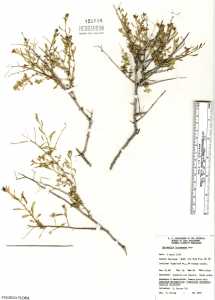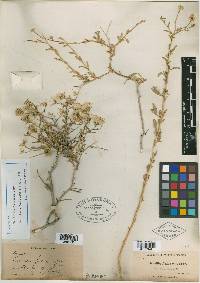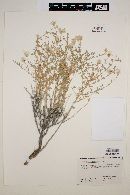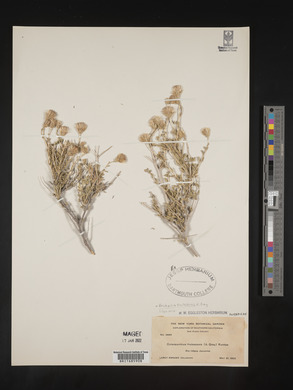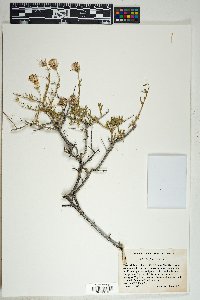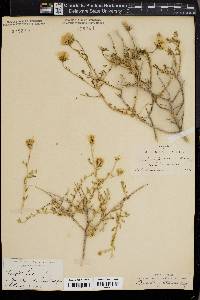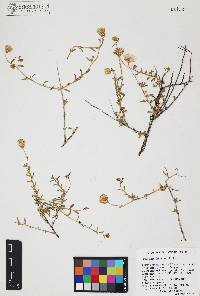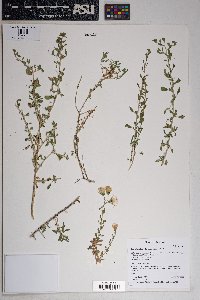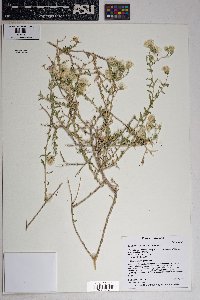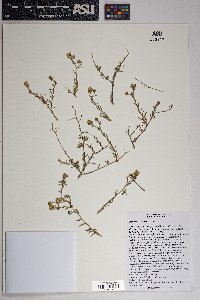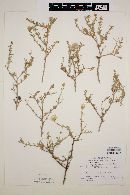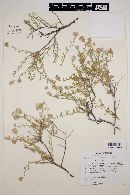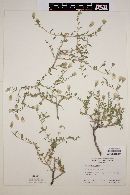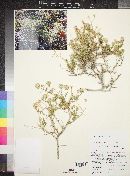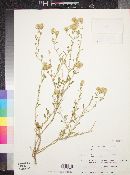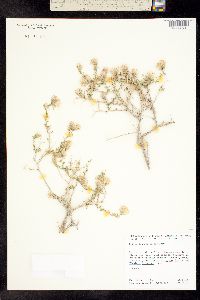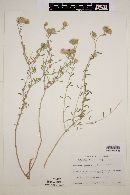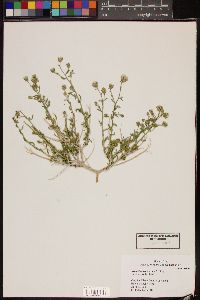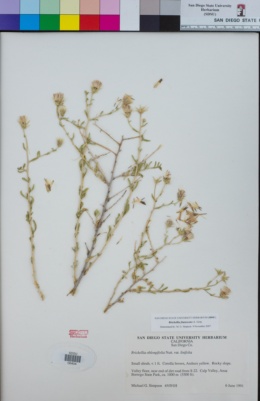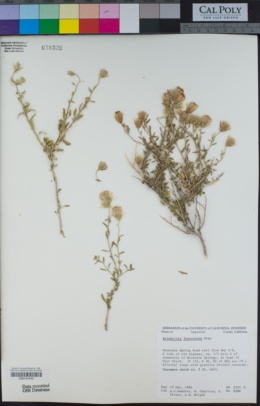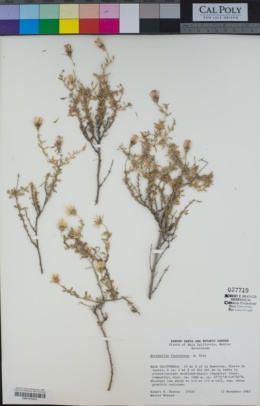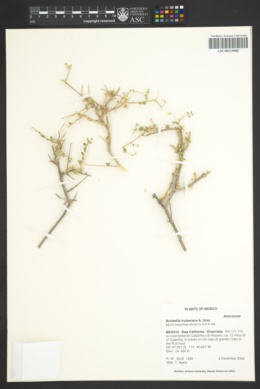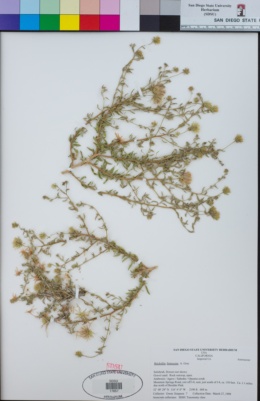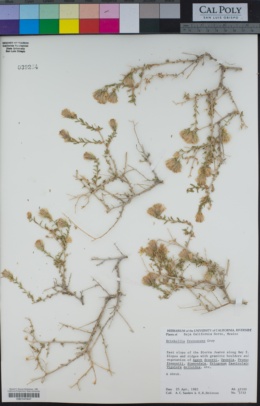Brickellia frutescens
|
|
|
|
Family: Asteraceae
Shrubby Brickellbush, more...rigid brickellbush
|
Shrubs, 30-60 cm. Stems intricately branched, hirtellous, sparsely gland-dotted. Leaves alternate; petioles 1-2 mm; blades (venation obscure) oblong to spatulate, 3-12 × 1-4 mm, bases acute to acuminate, margins entire, apices acute to obtuse, faces tomentose, gland-dotted. Heads in paniculiform arrays. Peduncles 10-30 mm, villous, gland-dotted. Involucres cylindric, 9-11 mm. Phyllaries 20-25 in 5-6 series, greenish, often purple-tinged, 4-5-striate, unequal, (sparsely villous, gland-dotted) margins narrowly scarious (apices rounded, mucronate); outer ovate to lanceolate (ciliate), inner linear-oblong. Florets 20-30; corollas purplish, 6.5-7.5 mm. Cypselae 3.5-4.8 mm, hispidulous; pappi of 26-30 white, barbellulate bristles. Flowering Mar-Jun. Granitic desert slopes or sands; 600-1200 m; Calif., Nev.; Mexico (Baja California). FNA 2006, Jepson 2012, Kearney and Peebles 1969 Duration: Perennial Nativity: Native Lifeform: Subshrub General: Perennial shrubs, 30-60 cm tall, stems intricately branched, surfaces short-rough-hairy (hirtellous) and sparsely gland-dotted. Leaves: Leaves alternate, blades oblong to spatulate (spoon-shaped), 3-12 mm long and 1-4 mm wide, margins entire, apices acute to obtuse, bases acute to acuminate, faces tomentose and gland-dotted with obscure venation, blades borne on petioles 1-2 mm long. Flowers: Flowers purplish, discoid, borne in heads with 20-30 florets per head, individual corollas 6.5-7.5 mm long, with cylindric, greenish and often purple-tinged involucres 9-11 mm long, phyllaries 20-25 in 5-6 series, these 4-5-striate (with parallel lines or striations), unequal, sparsely villous, gland-dotted, and persistent, with narrowly scarious margins, outer phyllaries ovate to lanceolate and ciliate, inner linear-oblong, both with rounded, mucronate apices, receptacles flat to convex, epaleate, infloresences with clusters of 1-3 heads in paniculiform arrays, on villous, gland-dotted peduncles 10-30 mm long. Fruits: Cypselae (achenes) narrowly prismatic, 10-ribbed, 3.5-5 mm long, with hispidulous (minutely bristly) faces. Pappi of 26-30 white, barbellulate bristles, these persistent. Ecology: Found on granitic sands, rocky canyons or desert slopes, from 2,000-4,000 ft (610-1219 m); flowering March-June. Distribution: Arizona, California, Nevada; Mexico. Notes: This woody Brickellia has smaller and more appressed leaves than many of the other Brickellia species in Arizona, and can get quite large. Look to the small, alternate, oblong to spatulate leaves 1-4 mm wide to help identify this species. Ethnobotany: Unknown. Etymology: Brickellia is named for Dr. John Brickell (1749-1809), early naturalist and physician of Georgia who came to the U.S. in 1770 from Ireland, while frutescens means shrubby. Synonyms: Coleosanthus frutescens Editor: LCrumbacher2012 |

